Record of Lodoss War: Deedlit in Wonder Labyrinth is a retro non-linear platformer about a war veteran from a medieval fantasy world who awakens in a mysterious labyrinth. Beginning to explore, Deedlit discovers her friends and comrades from the war are also present in the Labyrinth—as well as her enemies. She must explore the Labyrinth to find out what it really is, defeat her enemies from the war once again, and find a way for her and her allies to escape.
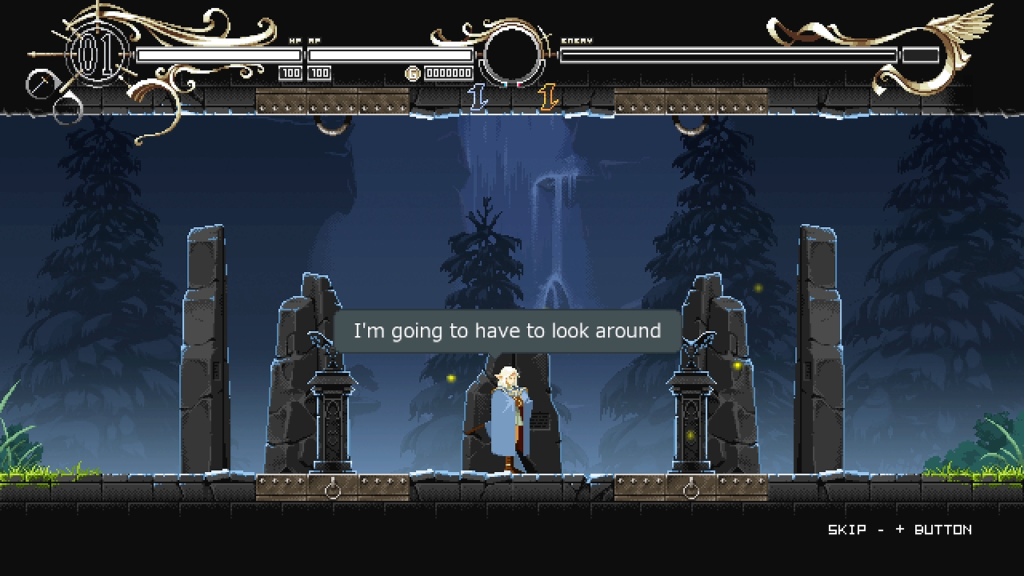
Deedlit in Wonder Labyrinth has a familiar format. Playing as Deed, I explore the Labyrinth to find new tools and abilities which will open up more of six densely interconnected areas. All the classic moves are here: Backstepping, double-jumping, sliding, and a limited form of flight all grant access to areas which were just out of reach a short time before. Especially diligent exploration will grant Deed with additional hit points, magic points, weapons, and spells to wield in battle with the Labyrinth’s monsters.
Anyone who has played a classic non-linear platformer, especially Castlevania: Symphony of the Night and its innumerable imitators, will immediately feel at home in the Labyrinth. Deed is even followed by a faint glowing echo of her body wherever she goes, just like Alucard who so clearly inspires her.
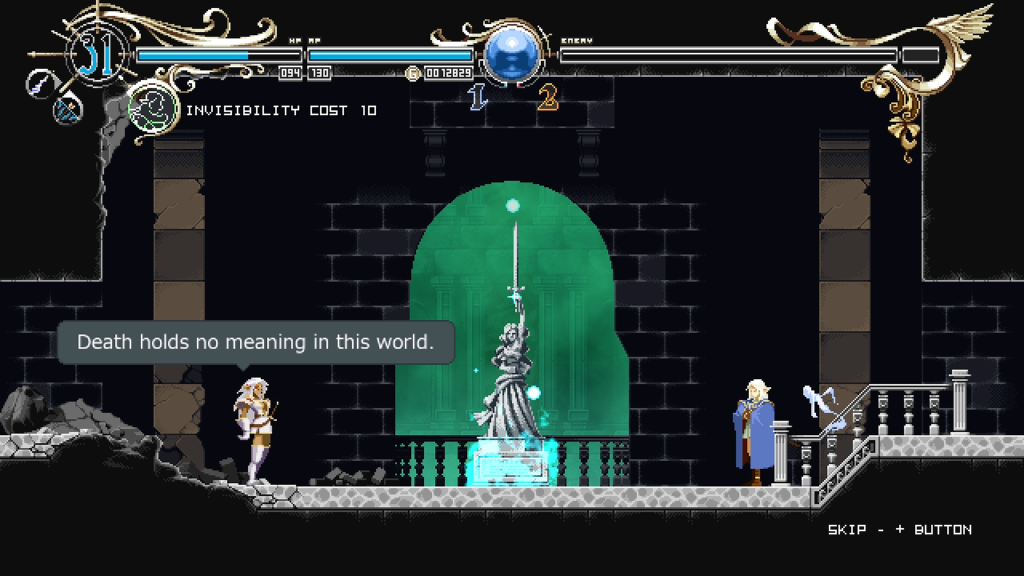
The central mystery of Deedlit in Wonder Labyrinth is what, exactly, the Labyrinth is. It occupies no apparent geographic location. With every step Deed takes, winding hallways shift from forest pathways to crumbling ruins, as though assembled from half-recalled memories intruding on physical space. This is to say nothing of the phantoms which haunt it, transforming from friends into foes who all jeer at Deed’s confusion.
By the adventure’s conclusion, I have discerned enough clues to have strong suspicions about the Labyrinth’s true nature with enough remaining ambiguity to keep the question interesting. Then a character carelessly blurts a much less interesting answer just before credits roll. Compelling thematic ideas are squandered by a plot frightened of unanswered questions.
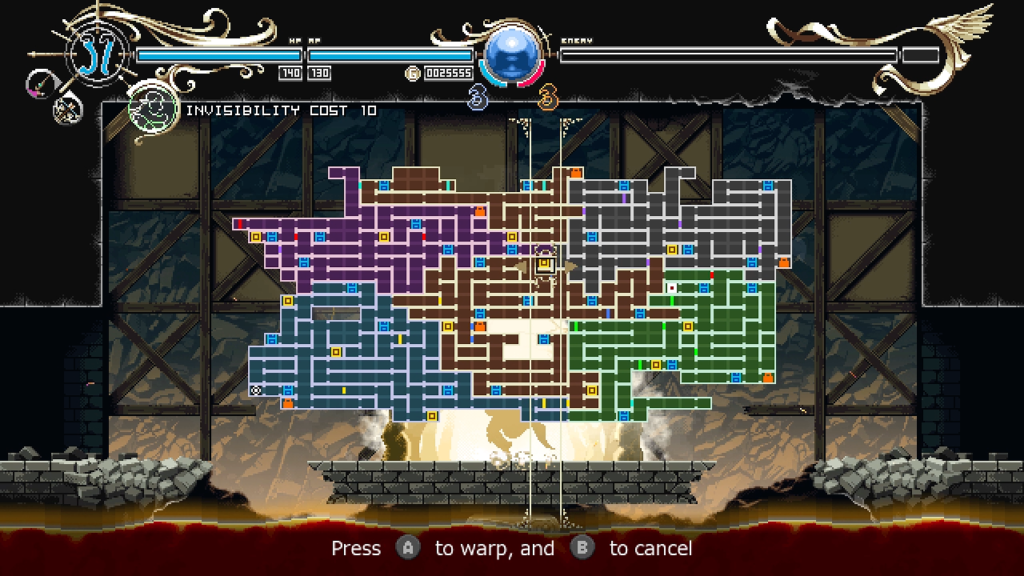
Deedlit in Wonder Labyrinth is remarkably short. This is mostly thanks to its small map, which fits snugly on a single screen alongside two weapon equipment menus. Numerous warp gates make short distances between areas feel even shorter, and many unlockable shortcuts further trivialize the backtracking endemic to non-linear platformers. Even leaving no clearly visible door or passageway unexplored, I still beat every boss and escape the Labyrinth in a little under five hours.
This small world size works in the videogame’s favor. In comparison to other non-linear platformers, Deedlit in Wonder Labyrinth’s focus is shifted from exploration to combat.
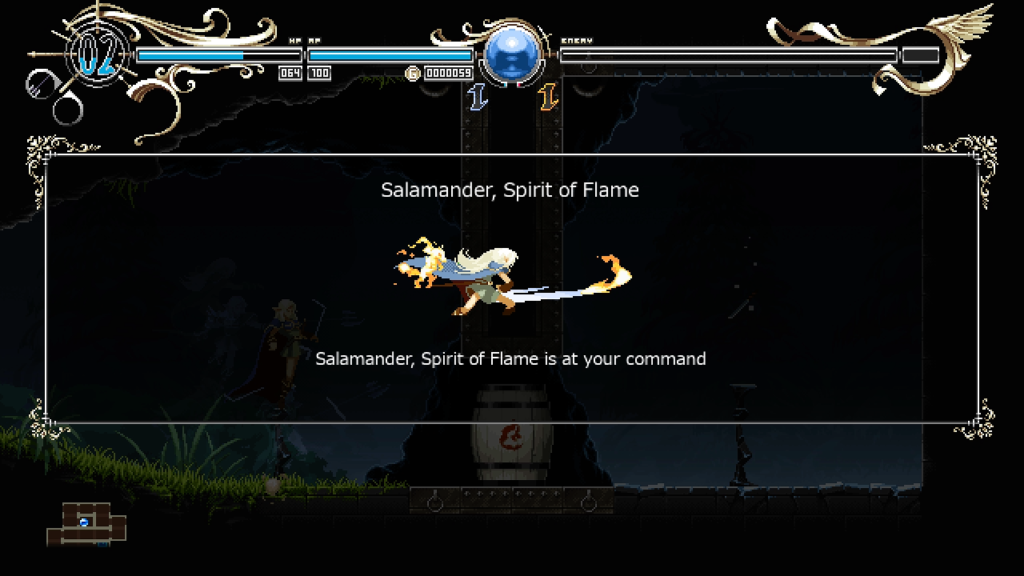
Some of the first discoveries Deed makes in the Labyrinth are two elemental spirits: Sylph, the Spirit of Wind, and Salamander, the Spirit of Flame. I can switch between Sylph and Salamander with the press of a single button, and each offers unique abilities. Sylph lets Deed hover indefinitely a few feet from the ground and makes her immune to wind-based obstacles and attacks. Salamander adds explosive force to Deed’s attacks and makes her immune to fire. These powers create interesting platforming challenges, but it’s the new dimension they add to combat which makes Deedlit in Wonder Labyrinth into a unique experience.
A boss pair Deed faces early in the Labyrinth are a good example of Sylph and Salamander’s powers in action. Djinn and Efreet are powerful King Spirits representing wind and fire respectively. To hurt Djinn, Deed must be equipped with the Salamander element, and to hurt Efreet, the Sylph element.
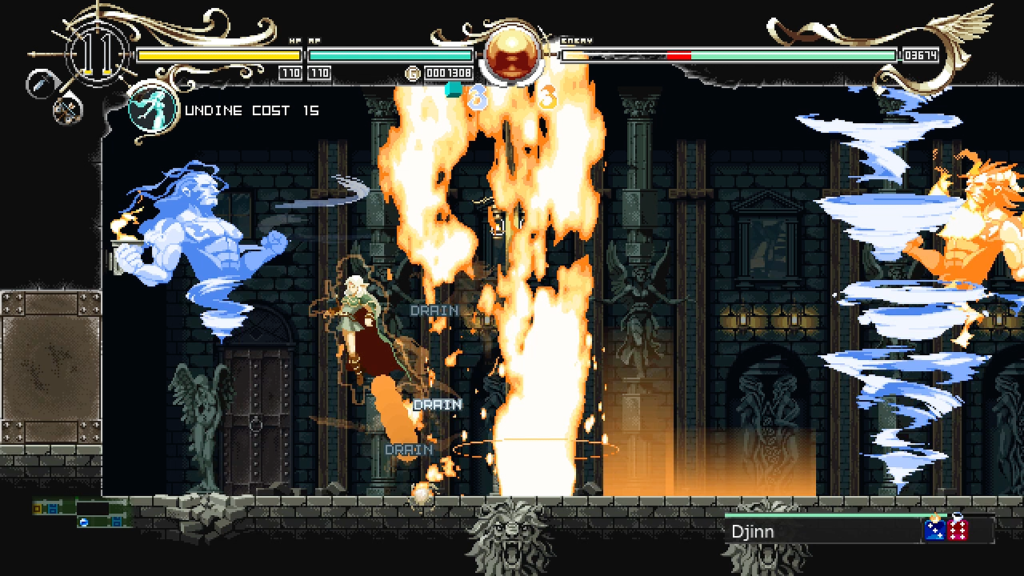
But it’s more complicated than that. The King Spirits take it in turns to hurl wind and fire spells at Deed that come in such speed and density that dodging past them is an impossibility. To defeat them, I must recognize which spells will come next, then equip the spirit which will make Deed immune to its effects. Often the pair fling spell waves in repeating patterns, and I must abandon offense to focus on shifting between elements with precise timing to keep Deed alive. Djinn and Efreet are just the first boss encounter which introduces element juggling. Later bosses are even more ferocious.
This “polarity shifting” is a mechanic I’ve only seen in shmups before now, and its application to a non-linear platformer not only makes Deedlit in Wonder Labyrinth what it is, it also makes its boss fights a daunting challenging.
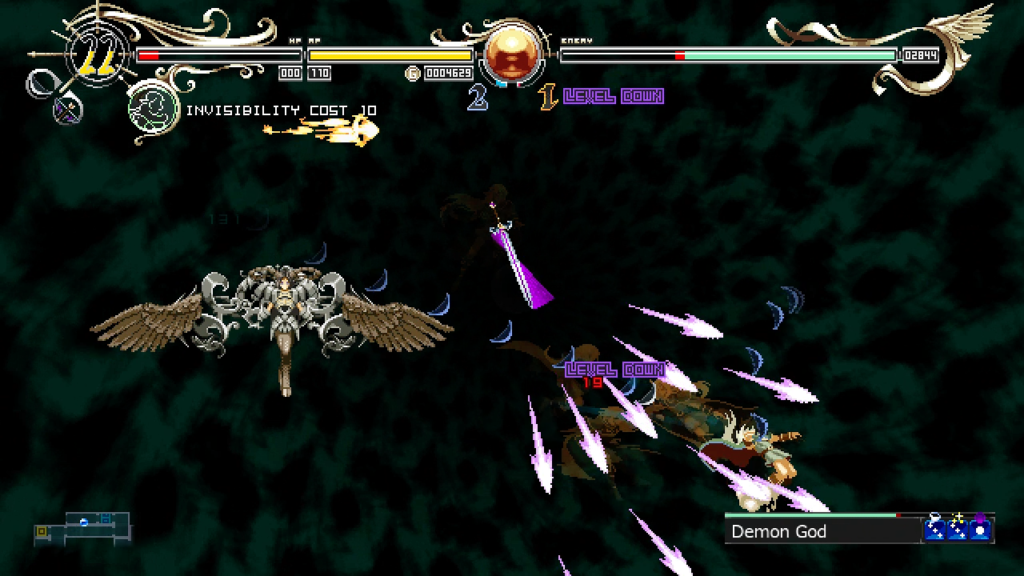
I am even tempted to suggest the polarity shifting makes the boss fights too challenging for some players. Deed has a remarkably small health pool, and the Labyrinth’s small size means there are few health upgrades compared to other non-linear platformers. This is offset by Deed having passive health regeneration when I am playing skillfully, but this perk is easily lost to a single mistake. Once the health regeneration is lost, these single mistakes tend to compound into a quick death.
My compounding mistakes are sometimes exacerbated by the one aspect of Deedlit in Wonder Labyrinth I look upon negatively: Stuns. When Deed is struck by several attacks in a row in a short window, she will become stunned and unable to move. Since Deed has just been hit hard, this means her health is already almost gone. The subsequent stun is nearly always fatal.
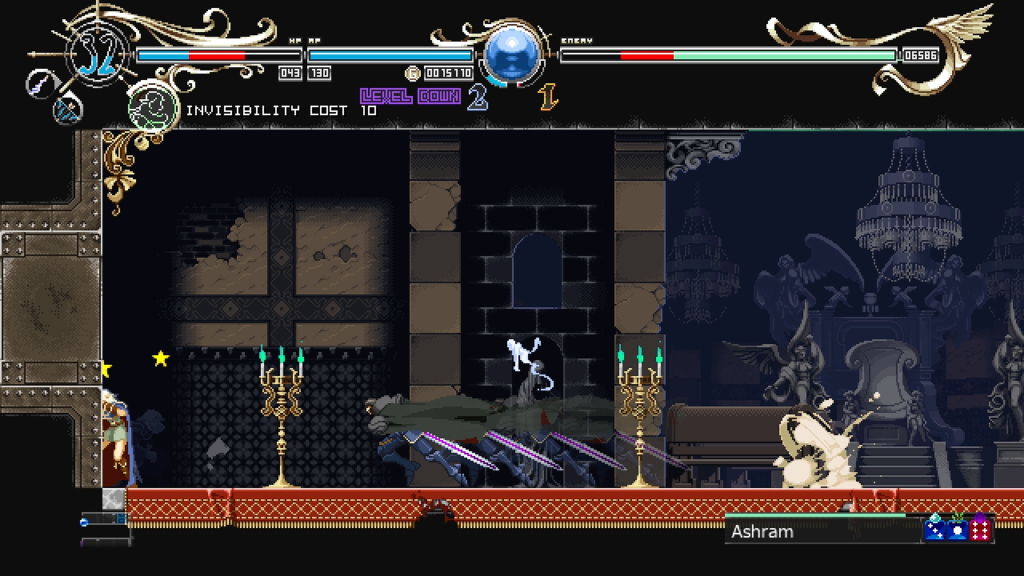
I’m baffled as to why Deedlit in Wonder Labyrinth feels the need to further punish my poor performance by awarding Deed’s enemies with additional free hits. Every time I encounter the stun mechanic I feel my frustration mounting higher and higher. Once again, the saving grace is the videogame’s short length. Before I can become completely fed up with the stun mechanics, Deed has escaped the labyrinth and the experience is over.
While I admire Deedlit in Wonder Labyrinth’s intricate pattern-based bosses where swapping elemental alignments with split-second timing is key to victory, I am concerned that it will simply be too aggressive for many players. Go in expecting challenging bosses that will push your concentration and your coordination to their limits.
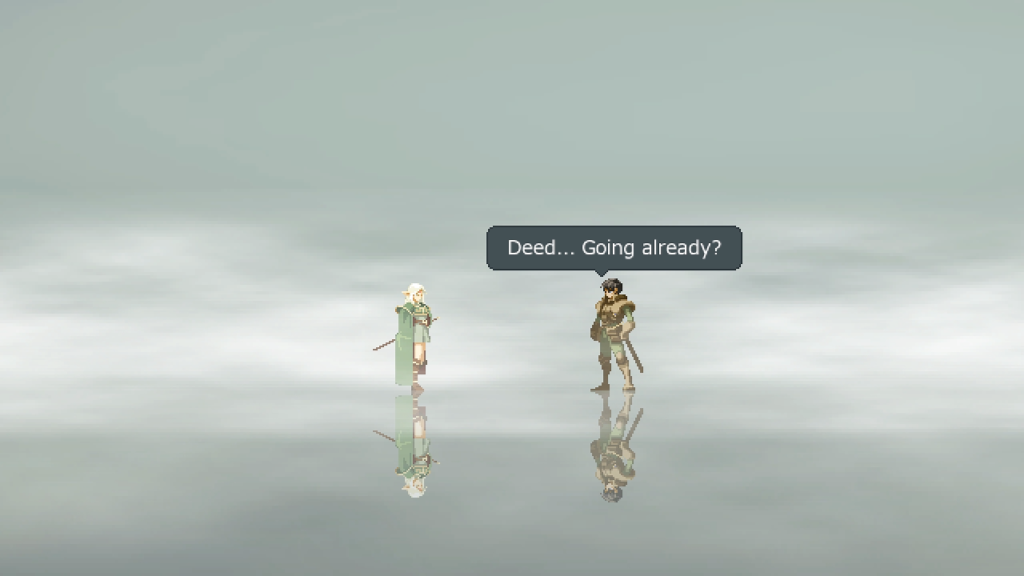
Record of Lodoss War: Deedlit in Wonder Labyrinth is an admirably bite-sized non-linear platformer. It smartly compensates for its small size with unique game mechanics for its genre and satisfyingly challenging bosses. Not even my lacking knowledge of the anime it is based on proves an obstacle to enjoying Deedlit in Wonder Labyrinth. I am able to follow the plot and discern the relationships between characters, at least in broad strokes, though players with a more thorough understanding of the series may divulge greater meaning from the events shown here. Deedlit in Wonder Labyrinth is a strong option for non-linear platforming fans looking for something small and tough to sharpen their skills on.